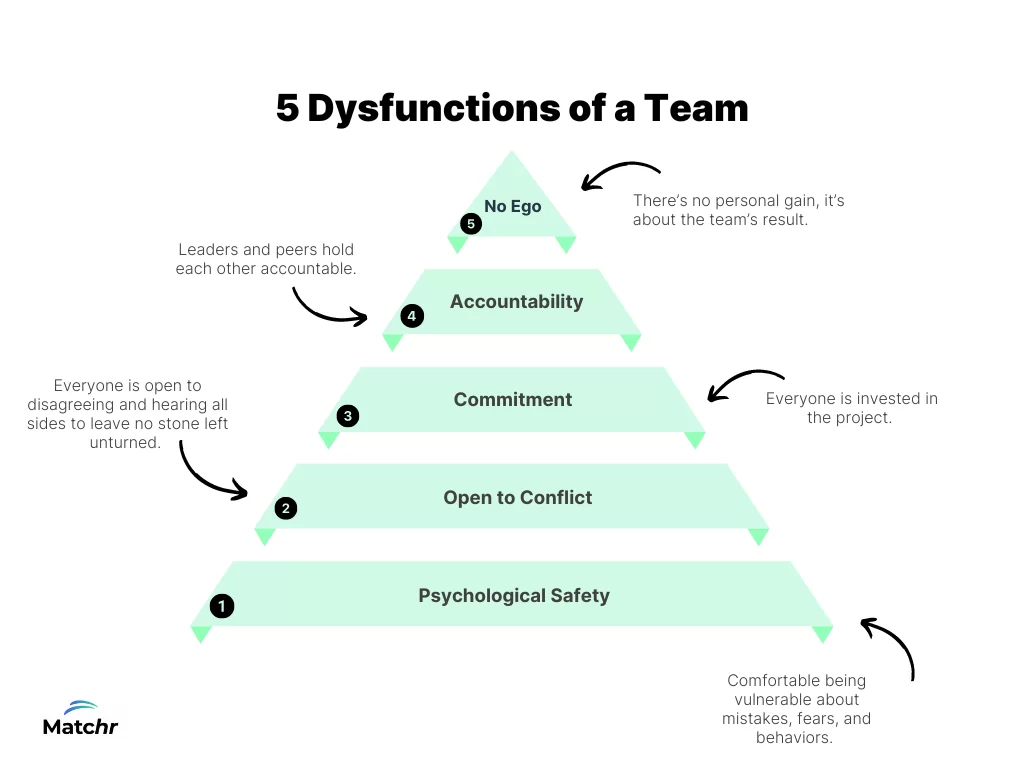My favorite past role was writing legal content for refugees. It combined meaning, purpose, and fulfilled my love for the law. Unfortunately, about six months into it, five team members resigned because the culture was toxic. As they left, their replacements echoed the same sentiments from roles they had just escaped from.
“Last year, 47.8 million workers quit their jobs, an average of nearly 4 million each month, meaning 2021 holds the highest average on record, topping the 2019 average of 3.5 million.”
– SHRM, How Historic Has the Great Resignation Been?
We’ve all heard the saying, employees don’t quit jobs. They quit micro-managers, unrealistic work expectations, and a culture without psychological safety. Everyone wants to be valued and feel like their opinion matters. It’s human nature. We crave meaning, purpose, and belonging. When those elements are missing, our physical, emotional, and mental health suffers.
But “toxic” is almost a buzzword these days in the workplace. What does it really mean? A toxic work environment essentially means it’s ripe with manipulation, blame, and infighting. It’s a negative expression to describe how employees and employers interact while getting the work done. With heightened levels of stress from the pandemic, layoffs, and inflation, it makes sense that the workplace has seen an uptick in less than unruly behavior.
However, there are still those teams that thrive while others fail. Patrick Lencioni’s 5 Dysfunctions of a Team model puts it into perspective.

1. Psychological Safety
The model is built on having psychological safety at work. Psychological safety is the capacity to show up authentically, ask questions, and push back without fear of negative consequences. As a basis for all teams, co-workers must feel comfortable expressing vulnerability with each other to breed a healthy foundation of trust.
Lencioni’s approach with dysfunctional teams is to start by asking managers and co-workers to share something with each other about their childhoods. By performing this exercise, participants can practice vulnerability in the workplace. Initially, it seemed too touchy-feely for some, but ultimately, the exercise helped employees gain insight into the origins of behaviors they found bothersome.
For example, it all made sense that Suzy, from accounting, was controlling when the team discovered she grew up in a disadvantaged neighborhood with a militant father. The exercise not only opened the door for vulnerability but also compassion, which promoted a greater sense of civility among the team.
2. Open to Disagreement
Teams must be comfortable with conflict. Their common goal should be to consider all viewpoints to find the optimal solution. If employees work in fear of rocking the boat to avoid conflict, they don’t feel safe enough psychologically at work.
As an individual contributor, expressing a different perspective takes courage and is only possible in an environment with psychological safety. When different perspectives are met with curiosity from the team and the manager, it boosts employee’s sense of respect and worth. This enhances the idea that everyone on the team is valuable.
Employees will also adapt their behavior based on what they see and prioritize self-preservation. Employees will stay silent to safeguard their positions if one is reprimanded for speaking out. If the manager isn’t receptive to opposition, employees will respond by staying silent. The team’s level of trust is built on the manager’s reaction. The manager sets the tone.
3. Commitment
With the ability to disagree, Lencioni highlights the necessity of individual investment on behalf of each team member. Picture an employee in your past who wasn’t committed. Did they speak up in meetings or stay silent? Committed employees have the courage to express disagreement with each other. Everyone must be dedicated to reaching an optimal solution.
To disagree, employees must feel enough dedication to debate a point of a view. Sometimes there can be a fine line between passion and conflict. What may feel like conflict brewing may just be a passionate team striving for the best outcome.
4. Accountability
When employees show commitment to the project, they also show commitment to their colleagues by maintaining a high level of accountability with each other. Giving critical feedback is the most common way team members hold each other accountable, which can be uncomfortable.
Keep in mind, a culture of safety doesn’t mean a culture of “nice”. Most employees think that any uncomfortable confrontation that turns to conflict promotes a negative environment, but resentment will closely trail behind. The ability to have conflict based on respect differs greatly from a culture based on fear. The former allows room for growth.
In a functional team, the project’s success is tied to the success of each individual. Team members will feel comfortable addressing expectations when there is a high level of commitment and trust. Some of the most supportive work relationships I’ve had have been ones that tell me when I am acting off in a meeting, or when I need to take a step back because my stress level is too high. I could hear this feedback without becoming defensive because I trusted those relationships. We all have blind spots and accountable team members help one another by calling attention to our shortcomings.
5. No Personal Gain
The top layer of dysfunction comes down to ego. The Journal of Applied Psychology published a study showing that leaders with high levels of self-importance tend to make overly confident decisions, resulting in negative outcomes and reduced effectiveness on their teams.
If anyone, particularly the leader, is in their role for professional gain, they are not dedicated to a successful result for the project. In other words, the best ideas may not be your own and good leaders are ok with this. An authoritarian leadership style can encourage a culture of silence and compliance.
Remember, a culture is set by the manager’s actions, reactions, and initiatives of inclusivity. The culture is formed because employees then emulate the same behavior with each other that they see exhibited by their manager. In essence, a manager who doesn’t hold employees accountable creates a culture where team members also don’t hold each other accountable.
How Each Layer Works Together
You can’t give critical feedback without knowing each team member is committed. In order for teams to disagree, there needs to be a level of safety that allows employees to take risks and make mistakes.
After making a mistake, if your manager asks, “What did you learn?” instead of responding with “Never do it again”, how does that impact your ability to continue taking risks? That’s why it’s important to start with a foundation of psychological safety as the first layer to cultivate a culture of innovation, respect, and support.
The next time an employee-employer conflict surfaces, it’s important to refer to the pyramid to gauge the health of your team. When an employee complains about a manager or other working relationship involving entire teams, consider using this quick survey to probe deeper into psychological safety.
Tips for Dispersing the Survey:
- Define your metrics to measure results.
- Survey different teams so you can get a baseline.
- Make the survey anonymous so your employees share honest feedback.
- Bypass managers in case there are problems.
- If you don’t have an HRIS to deploy surveys, use a free survey tool like Survey Monkey to analyze results quickly.
- Share your results with managers as they lead your culture.
- Schedule an opportunity for followup and map out a plan to address low team scores.
Download our team assessment
How to Score the Assessment
Using our assessment, give a score:
- 1 to all Yes answers
- 2’s to all Maybe’s
- 3 to all No’s
Then, for each individual survey, tally up their score.
- A score of 1-7 is a healthy team.
- A score of 7-14 needs some probing.
- Anything 14+ needs an investigation, like dispersing to a broader base in order to inquire further about team dynamics.
The cost of replacing your investment is too high a price. It’s crucial to take initiative in assessing the level of trust and psychological safety in your employees’ work environment. Patrick Lencioni’s 5 Dysfunctions of a Team offers great insight into getting to the root of retention and turnover.













